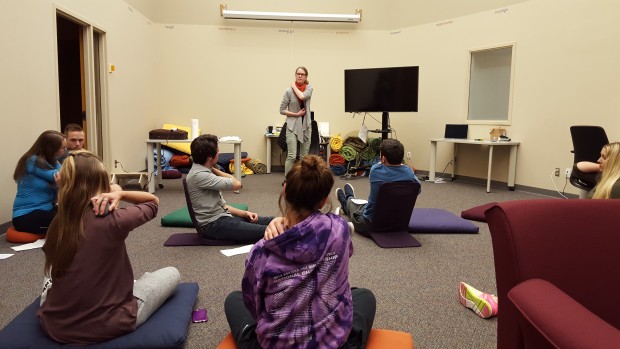
In preparation for the impending stress of a new semester, St. Thomas students tested their hand at self-massage and acupressure through a hot stone massage therapy event offered by the Wellness Center last week.
The event was the first of its kind at St. Thomas and taught participants how to use hot stones and massage for relaxation. Acupressure, a technique during which pressure is applied to acupuncture points all over the body in order to relieve pain and stress, was also briefly covered.
“We are holding the event as a stress-relief avenue for students who are unfamiliar with the relaxation benefits of massage,” said Chelsea Akin, a health educator at the Wellness Center.
The Wellness Center’s website describes hot stone massage as a therapy that melts away tension, eases muscle stiffness and increases circulation and metabolism, adding that the practice can help combat chronic pain and stress and encourage relaxation.
Stacy Dunn, massage therapist and instructor for the event, explained that typical hot stone massages use 20 to 30 stones of varying sizes. However, “one is enough for self-massage,” she said as students chose their stones to use during the class and take home.
“We use basalt stones because they hold heat better and are really smooth,” Dunn said, handing out information on stone care.
As students stretched, Dunn explained how to safely practice acupressure on the scalp. She said the vagus nerve, the longest of the cranial nerves, plays a crucial role in relaxation across all age groups.
“One of the strongest predictors of good psychological health is a strong vagus nerve,” Dunn explained to the class, adding that the ability to tone this nerve at a young age helps with stress relief in later years.
Dunn said about 90 percent of the students she helps have the same trouble spots — something she calls the “student special.” These areas include the tops of the shoulders, the shoulder blades and the back of the neck.
“This is where students are tightest due to reading or computer use,” Dunn said. “If your neck and back are hurting, rubbing the bicep area can help. Shoulder joints are shallow so muscles get overworked easily.”
Freshman Kailee Stiff said that the stretches taught during the class were most helpful for her.
“It’s something to do if you’re doing homework and you want to take a break. I can just massage my hands after typing. I feel like it’ll help calm me down,” Stiff said.
Akin said that there are multiple options around campus that allow students to relieve stress in healthy ways, including meditation, hot stone massage, aromatherapy and therapy animals in the library.
For more information about stress relief activities offered at the University of St. Thomas, visit the Wellness Center’s webpage at http://www.stthomas.edu/wellness/.
Meghan Meints can be reached at mein9517@stthomas.edu.

